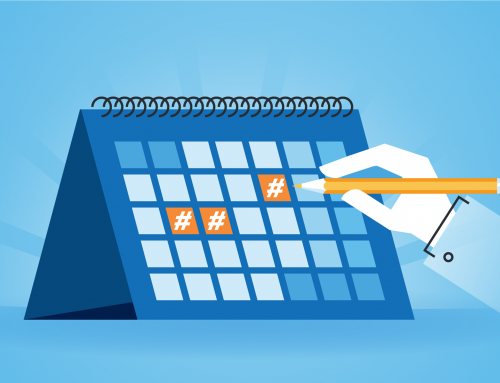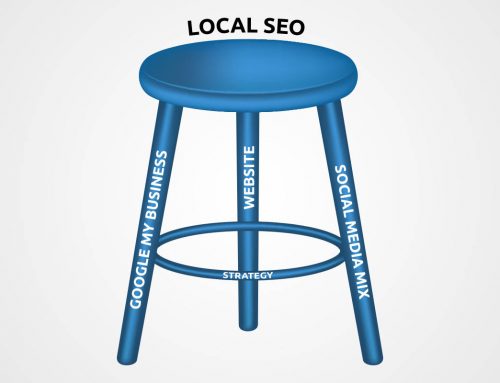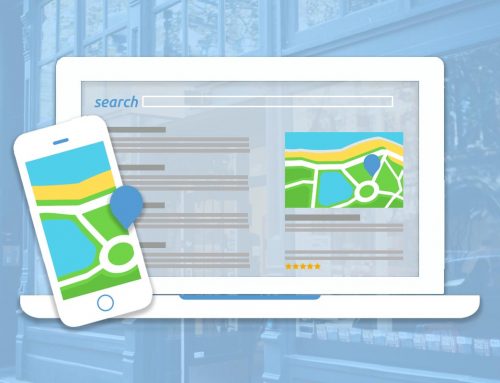Improving on the 3% Rule
How modern marketing overcomes obstacles faced in traditional marketing.
Improving on the 3% Rule
How modern marketing overcomes obstacles faced in traditional marketing.
In everymarketing course I took 15-20 years ago and every sales training I participated in with yellow pages sales, the 3% rule was often brought up as a reason used by TV, Radio, Newspapers, Magazine, Mailers, and Billboard companies to sell the idea of consistency. Because only 3% of anyone hearing/reading/watching your ad will be an active buyer for your products/services, you have to keep your message out there consistently. Unfortunately, many habits formed in marketing since the 1950s have become costly habits when it comes to not adapting in digital strategies. Given the right strategy, you can avoid becoming part of the noise that is completely irrelevant to 60% of those who might be seeing your ads (if still using the old-school approach) and promote more to the 10% who are actively seeking and purchasing a solution. You can also begin some catering to the 30% who are passively considering options, but not quite to the last couple phases in the buyer’s journey.

The 3% Rule: Buying Time
Let’s break down the thought process behind the 3% Rule. When looking at the masses of consumers out there, this rule assigns the market to five segments. These segments take into account everyone: those who don’t need/want what you have to sell, those who are/aren’t interested in your business, those not ready to act, those with the intent to buy, and those who are ready to buy.

Marketing Strategies with the 3% Buying , 7% Seeking, and 30% Interested
The areas of the buyers’ journey that brings more immediate potential for return on investment are in these three segments of interest, seeking, and actual buying. If marketing budgets are limited, these following strategies to these potential customers are ideal for success online.
30% with a need (and we’ll add in here want) for your services or products but aren’t buying now.
For any strategicly-minded businesses out there, this is prime time for building brand awareness. Getting your message out in view for this market segment will be better received than the other 60% not in the market or not interested in your company. It is in this phase you can work to accomplish on of two significant outcomes with these consumers:
- Build Brand Trust – Starting early and repeating your message often to consumers you discover in this space can develop confidence and trust in you. At the very least, you’ll have stronger brand recognition when they near the selection and buying stage.
- Develop Urgency – A key factor in this segment is they have a need or desire, but that level of need or want hasn’t risen to the point of being active in a finding a solution. Messaging that either “twists the knife” (so to speak) or elevates the positive outcome significantly enough for them to justify upping their timetable for buying are options in creating a greater sense of urgency in this market.
7% who are actively seeking a change or solution you offer.
This group is quite active in doing research online and in person. Knowing what questions they have during this portion of their customer journey helps you target them with specific content and messaging to help educate them how your product/service helps them and why they should choose you.
3% who are buying – and soon.
Showing up in their search results and having your brand and messaging dialed in on this segment is critical. This is where all the return becomes possible from all your efforts to attract customers. For any email, digital marketing, and call strategies you have in place, these leads should have highest priority. To improve conversions with this segment of your market you should:
- Be Compelling – Make your product/service stand out by connecting your WHY with their need/want. The more you can align your business with being the obvious solution for them, the more successful you’ll be.
- Remove Obstacles – The closer you get them from the click on the add to buying the product or service – without hurdles of site navigation in between, the better. If you feel a FREE Trial, Introductory Pricing, or discount might help – if indidcations are they’ve visited frequently, but sill haven’t bought – those are worth consideration. Above that, though, get your value propositions wrapped into your messaging so it becomes more obvious to them you provide the solution at a reasonable price as it is.
Consider This Math
While you wouldn’t imagine preventing your brand getting out to 100% of the market, focusing with greater intensity on the top 40% or top 10% with your marketing efforts significantly increases your potential to win sales with the audience you’re targeting.
How to Target
As you identify what a potential customer looks like in each of these segments, here are some tools available in digital marketing that aren’t available in traditional marketing. These help you increasingly hone in on potential buyers based on a mix of demographics and actual behavior in their online search and interests that align with the products and services you provide.
Pay Per Click

Depending on your products and services, this can be quite competitive. But, if targeting the appropriate sets of long-tail and short-tail keywords, using solid landing pages optimized for conversion, PPC can prove successful.
Setting specifics to target your ads to the searches best fitting the demographics of your ideal customer is also critical.
Paid Social

Social media stores a significant level of demographic information. Match that with their interests and browsing history, paid social media ads are helpful in targeting the 30% interested to help strengthen (or create) brand awareness.
Targeting those who’ve been to your or your competitions’ websites can be helpful here as well for the 7% and 3% further along the customer journey.
Display Ad Network

These ads available on any webiste populating Google Display Ads are great for targeting anyone who has been to your website or that has been searching for your products and services – even if they haven’t been to your website. Great for drawing people back to your website or pulling people who’ve been to your competitors’ websites.
Using information regarding affinity searches – people who are searching other things with significant correlation to your target audience – can prove effective in introducing your brand to the 30% interested segement.
Remaining Actively Passive
… with the remaining 60%
The best part of focusing on the high level leads in your market does not mean ignoring the other 60%. Your content marketing for organic and the best practices applied to aiming at those most likely to buy sooner than later will still have the potential of reaching the entire market – it just won’t be your focus.
While the 30% who don’t have the need for your services are least likely to be reached when focusing on the 40% and 10% at the top, the 30% who aren’t interested in buying from your company will see your brand in organic and paid search results – as well as your paid social efforts. Depending on their experiences with other companies or changes in their personal bias, there may be a time when the repetition of seeing your ads and messaging breaks through and wins their trust.
The point in prioritizing who you aim your ads at isn’t about ignoring the rest of the market, rather optimizing you return on investment. Digital affords businesses that ability in ways traditional marketing could never dream of. There’s a reason marketers used to say, “Half my marketing is just a waste of money, but I don’t know which half that is.” Before digital in its current level of targeting, marketing relied on broad demographics about buyers. The term Spray and Pray was often attributed to mass forms of marketing commonly practiced before digital marketing advances. Now, you can add search interests and behaviors, browsing activity, and other online engagements to the demographics to hone in on specific audiences.
Today, the question is less about being able to target the right audience and more about getting a compelling enough message in front of them to set yourself apart and earn their business.






